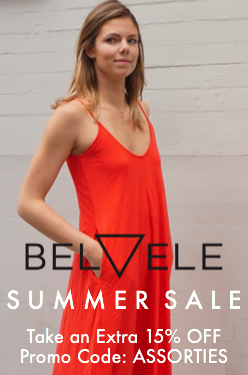FASHION TECH INSIGHTS: WEAR
Internationally popular Japanese lookbook/street-style app WEAR has recently been introduced in the US, and its team is basking in the quiet success of its launch. Initially launched in 2013, today its stylish feed reaches over seven million users in 21 countries. The app’s features, some of them are very similar to those of social networks’ (see likes, hashtags, and feed), makes it super easy to use; members of WEAR community share their outfits tagging their clothes’ designers – fact that makes them instantly shoppable – based on a daily hashtag. Since mid-July, the company has partnered with Refinery29, T Magazine, TeenVOGUE, VOGUE, and W running hashtag challenges giving WEAR users the chance to appear on their websites. We caught up with Reimi Kami and Alisa Gould-Simon, members of the WEAR team, to learn all about WEAR and WEAR US – how it works, what makes it special, and what are the founder and team’s expectations.
In what ways does WEAR differ from other personal style apps?
WEAR is a search site specialized in fashion. You can search looks by various kinds of criteria – for example, brand, category, color and price, hairstyle, age of users, hashtags, to name a few.
We think this is WEAR’s most different feature from other personal style apps. It would be kind of a burden though to add this information when you post a look, but this makes it possible for users to search looks by the various criteria mentioned above. This also makes it easier for them to find other users who meet their preferences. Considering that most of the employees of our company are so into fashion, and WEAR is made by us from a user’s perspective, it may not be surprising that WEAR has gotten the support of people who love fashion like us.
What were the key points you made sure to finalize before launching in the States?
It’s been almost three years since we first launched WEAR in Japan, so we’ve acquired and accumulated expertise in operating. We’ve also improved the completeness of the service, so we thought we’re ready to expand our service.
Are there any differences between the Japanese and American version?
They are basically the same actually. We think it’s necessary in the beginning to gather users who post high-quality looks because this was the key point of the success of the Japanese version. So, by offering hashtags every day, we’re trying to encourage people to post great content.
Could you describe for us how WEAR works, briefly introducing the features you have incorporated – such as “Wearista?”
WEAR is SNS, and its contents are user-generated. You can see looks posted in the past, no matter how many years go by. It is said that fashion trends are generally repeated in a several-year cycle, so the present contents of WEAR may become more valuable several years later.
In Japan, WEAR leads users from item pages to fashion e-commerce sites such as ZozoTown where they can buy the items directly. We’d like to introduce this kind of system into the US version as well in the future.
Regarding Wearista, some are fashion influencers such as models, actors, and designers with verified accounts, the others are ordinary people who have gotten popular and have many followers on WEAR.
You have also included kids’ looks. What prompted this decision?
There are so many fashionable kids in Japan because their parents were crazy about fashion in 90s, when street fashion was in its heyday in Japan. They like to make their kids look fashionable. Recently, it seems like kids’ looks are growing in popularity in other countries, as well.
WEAR also aspires to connect users with under-the-radar, indie brands. Is this initiative subsequent to the US launch or was this the case with the Japanese edition, as well? Is the Japanese audience embracing emerging labels?
It is not the initiative subsequent to the US launch. It seems like fashionistas often wear indie brands to maintain their uniqueness. We’d like to get attention from people like them, and encourage them to post positively, so we’re aspiring to connect them with emerging labels. We would be happy if these brands become famous too!
You also collaborate with Refinery29, Tmagazine, teenVOGUE, VOGUE, and Win #tagawards. How did this collaboration come about?
We told them our passion for fashion and introduced our service, which we think aroused their interest. This made the collaboration possible.
Your app had 4 million downloads within a year and currently has 3.3 million active users around the world. How are you dealing with the pressure to keep up with your own success?
The goal of WEAR is to connect people all over the world through fashion, and encourage them to enjoy fashion even more, so we think we are still at an intermediate stage. We need to make a constant effort to achieve that goal.
What should we expect from WEAR in the future?
We think fashion is universal and non-verbal, which means that people all over the world can understand it without any language. You can expect us to make a new peaceful community where users can connect with each other through fashion.
WEAR is available for download at and .
http://wear.net/
Images via Wear
Featured image via


